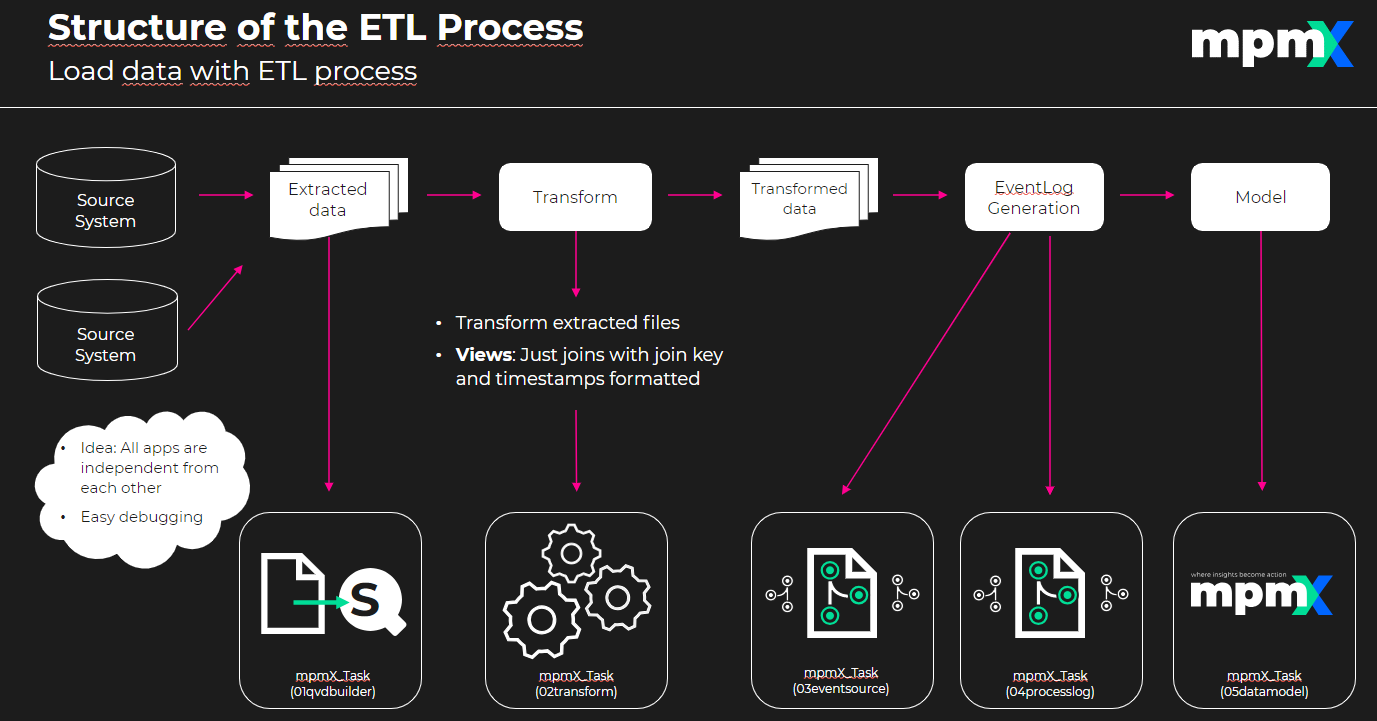|
App Structure |
Scroll Previous Topic Top Next Topic More |
The mpmX TaskApp (EventLogGeneration Mode) contains one app which you need to duplicate for the different scenarios. Example scenarios are defined in the mpmX_scripts/customizing/_templates folder in four layers: 01qvdbuilder || 02transform || 03eventsource || 04processlog || 05datamodel
Steps to work with the mpmX TaskApp:
1.Copy the customizing templates into your mvProcessDescription folder or create new ones and define your mpmX_execute subroutine.
2.Duplicate the TaskApp and change the mpmXvAppConfigAlias for your scenario.
3.For a better overview add the scenario to the duplicated TaskApp name e.g. mpmX TaskApp_01qvdbuilder
Layer structure:
•01qvdbuilder
oIn this scenario, .QVD files from the database are extracted. Consequently, this scenario is used in the Extract phase.
•02transform
oIn this scenario, you can transform the data from the first app by creating for example new fields and new keys.
oWe highly recommend creating the data view files here, which are joins of tables that are often used in the third app. Therefore, this scenario is used in the Transform phase.
•03eventsource
oIn this scenario, the events for the event log are defined. This scenario includes the required methods and structure to accomplish this task. Consequently, this scenario is used in the first part of the EventLog Generation phase.
•04processlog
oIn this scenario all the event sources previously generated are used to create the final process log. This scenario is the second part of the EventLog Generation phase.
•05datamodel
oIn this scenario you can enhance the existing data model with e.g. currency conversion and save the .QVD files. This scenario is optional and you need to define mpmX_execution.
The duplicated mpmX TaskApps with the different scenarios replace the previously used EventLogGeneration Apps.
The mpmX TaskApps (EventLogGeneration Mode) have a 5-Layer model, which is presented in the following picture:

TaskApps 5-layer model
This structure is built to maintain the tables from one app independent from another and you can naturally apply your data architecture techniques to tailor the process to your needs.
In this chapter, there is one example that is explained by parts on each section. At the end of the document, you will find a recommended folder structure, which is mentioned at each eventlog generation phase.